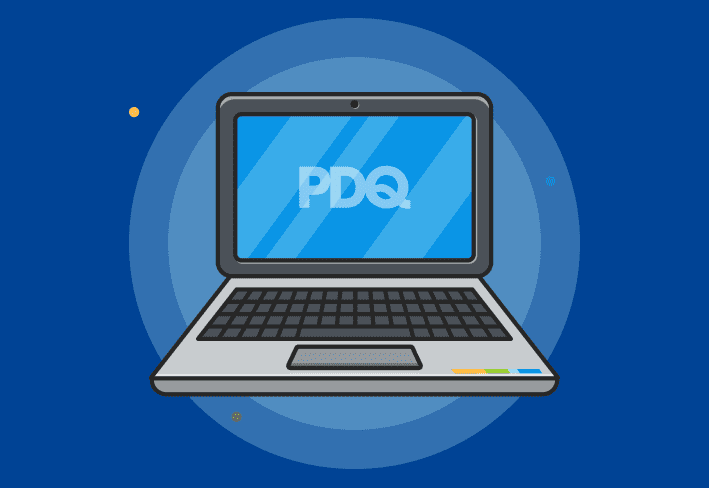Intune and Group Policy are Microsoft’s two main tools for managing Windows devices. Intune is cloud-based and ideal for hybrid work, while Group Policy controls on-prem Windows systems through Active Directory.
Comparing Intune vs. Group Policy isn’t about picking a winner — it’s about picking the right tool for your environment. As more IT teams go hybrid, the question isn’t if you’ll use the cloud, but how much. Here we break down what these systems do and why many sysadmins end up juggling both.
Join our live webinar
Sign up for our November 19 live webinar, Intune’s got gaps. We’ve got solutions. See how other tools can complement Intune to simplify endpoint management.
What is Group Policy and how does it work?
Group Policy manages Windows devices through centralized rules set in Active Directory. It uses Group Policy Objects (GPOs) to apply settings for security, user restrictions, software deployment, and system configuration.
Under the hood, GPOs apply via the Local Security Authority and registry edits every 90 minutes (give or take a coffee break). It’s all domain-based, which means if your machine can’t see the domain controller, it’s living off cached settings. Old-school? Sure. Effective? Absolutely — especially in tightly controlled on-prem environments.
What is Microsoft Intune and how does it differ from Group Policy?
Microsoft Intune is a cloud-based mobile device management (MDM) platform that handles configuration, compliance, app deployment, security policies, and reporting across Windows, macOS, iOS, and Android devices. Unlike Group Policy, Intune doesn’t rely on domain join — it uses Entra ID and communicates over HTTPS.
Where Group Policy edits the registry directly, Intune uses Configuration Service Providers (CSPs) to manage device settings. Think of it as GPO’s cloud-native cousin: same goals but with a friendlier interface and broader reach. Intune integrates with other Microsoft 365 security and compliance services through the Intune admin center (formerly part of Microsoft Endpoint Manager).
So, while GPO is rooted in your LAN, Intune’s the one sending settings from the cloud — no VPN, no domain.
Does Intune replace Group Policy or complement it?
Intune doesn’t fully replace Group Policy. It complements it by handling mobile and remote scenarios GPO can’t touch. Some deep system and security settings (like custom registry edits or legacy app configurations) still often call for GPOs. Others — like device compliance or remote wipe — are Intune territory.
Here’s the quick Intune vs. Group Policy comparison:
Feature | Group Policy | Intune |
Management method | On-prem via Active Directory | Cloud-based via MDM (Entra ID) |
Control level | Deep system and user config | Broad compliance and policy enforcement |
Device support | Windows (domain-joined) | Windows, macOS, iOS, Android |
Complexity | Steep learning curve, lots of knobs | Easier interface, cloud-first |
Best fit | On-prem & tightly controlled environments | Hybrid & remote workforces |
What are the pros and cons of each for Windows management?
Group Policy pros:
Extremely granular control over Windows behavior.
Doesn’t need internet access or cloud enrollment.
Mature, well-documented, and battle-tested.
Group Policy cons:
Requires domain infrastructure.
Limited reach for remote or non-domain devices.
Reporting and visibility are … let’s say “vintage.”
Intune pros:
Works anywhere with internet.
Unified management for all device types.
Integrates with Entra ID and Microsoft 365.
Intune cons:
Limited compared to GPO for deep system tweaks.
Slower policy refresh cycles.
Requires more specific licensing (and patience with the portal).
If GPO is a wrench set, Intune is a smart toolbox — it automates a lot, but sometimes you just want to turn a screw yourself.
Can both be used together?
You can use Intune and Group Policy together through hybrid Entra ID join or comanagement with Configuration Manager, allowing each tool to manage different workloads.
You can then configure which workloads Intune controls (like compliance or Windows updates) and which stay under GPO’s rule (like software restrictions). Just don’t push conflicting policies or you’ll spend the afternoon untangling a “last writer wins” mess.
Which approach works best for hybrid or remote IT environments?
Intune is best for hybrid or remote environments because it manages devices over the internet without a VPN. Group Policy still fits legacy or on-prem systems that need direct domain control.
The real power move? Pairing Intune with PDQ Connect.
Centralize your device management
With PDQ Connect, gain real-time visibility, deploy software, remediate vulnerabilities, schedule reports, automate maintenance tasks, and access remote devices from one easy-to-use platform.
PDQ: Practical alternatives and companions
PDQ tools complement Intune and Group Policy by offering simpler on-prem and cloud device management.
If Intune feels too “cloudy” and Group Policy too old-school, PDQ’s tools hit the sweet spot.
PDQ Connect brings cloud-based endpoint management that feels like Group Policy but works anywhere. It’s agent-based, giving you direct visibility and real-time control across remote systems.
PDQ Deploy & Inventory give you on-prem control with the ability to automate updates and report across your environment — no MDM enrollment required.
SmartDeploy adds easy imaging and provisioning, perfect for hybrid setups that still need to refresh hardware the old-fashioned way.
SimpleMDM delivers full-scale mobile device management for macOS and iOS, offering centralized configuration and app deployment across Apple hardware.
In short: If your team manages a mix of on-site and remote devices, using PDQ Connect alongside Intune or GPO gives you flexibility without losing sleep — or visibility.
Picking the right tool for your IT reality
If your devices live on-prem and rarely see the internet, Group Policy still rules the roost. If your users roam and your infrastructure’s half in the cloud, Intune is your ticket to success.
And if you want the simplicity of GPO with the reach of Intune — PDQ Connect delivers both. Start a free trial to see for yourself.




